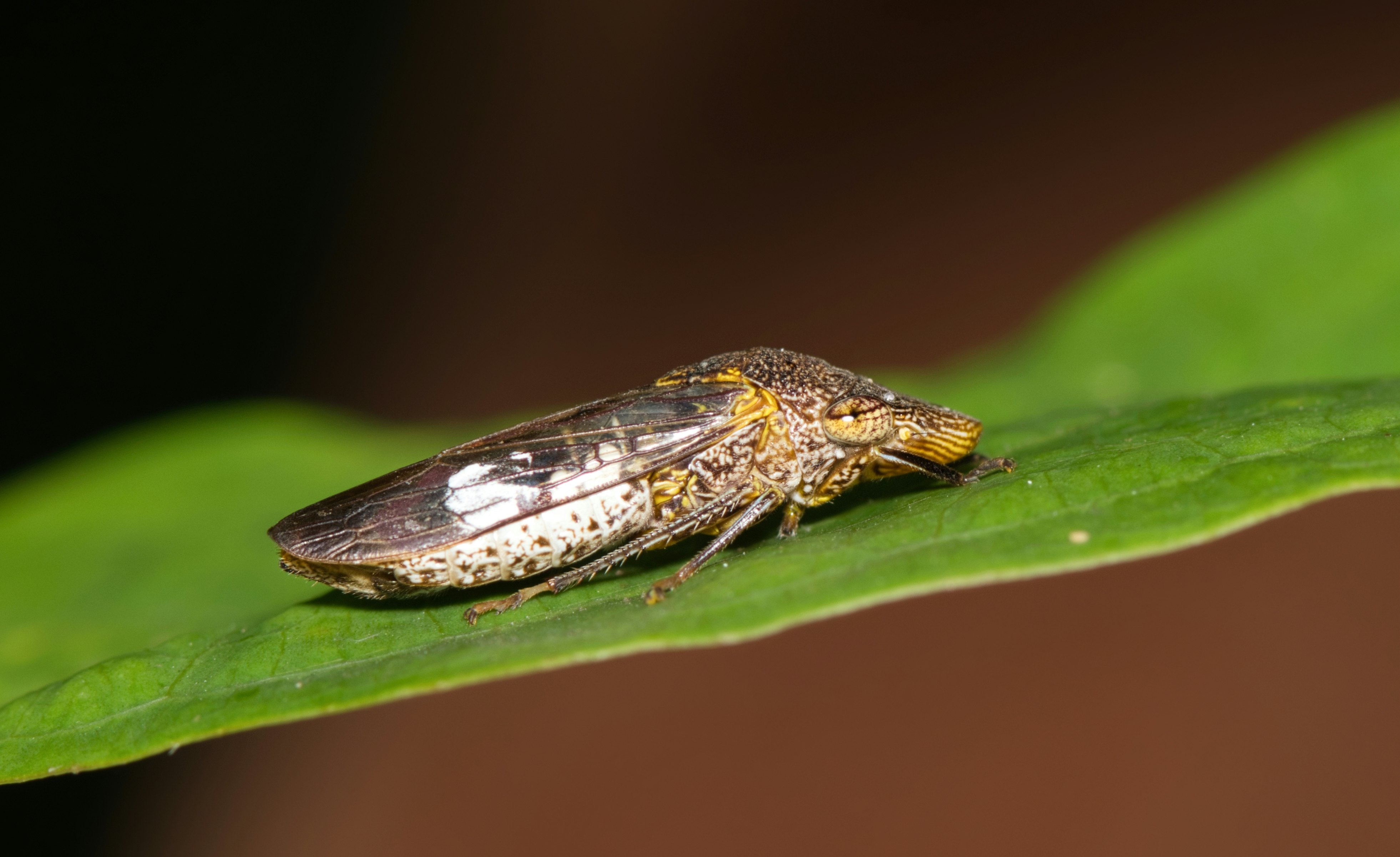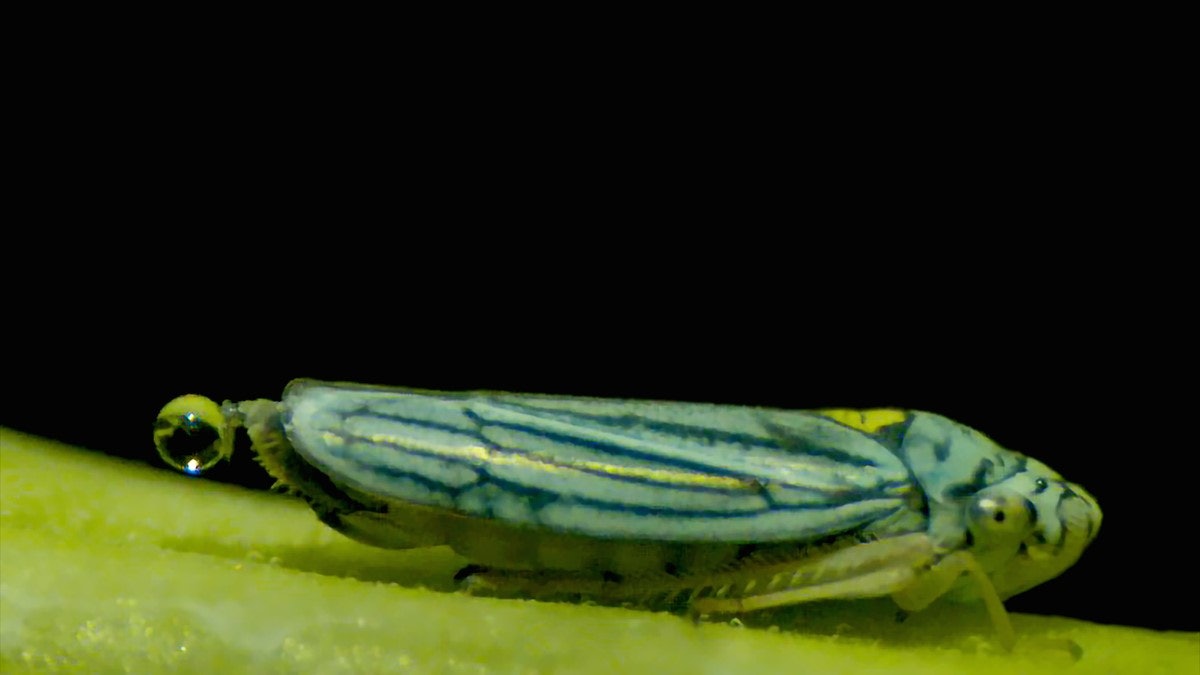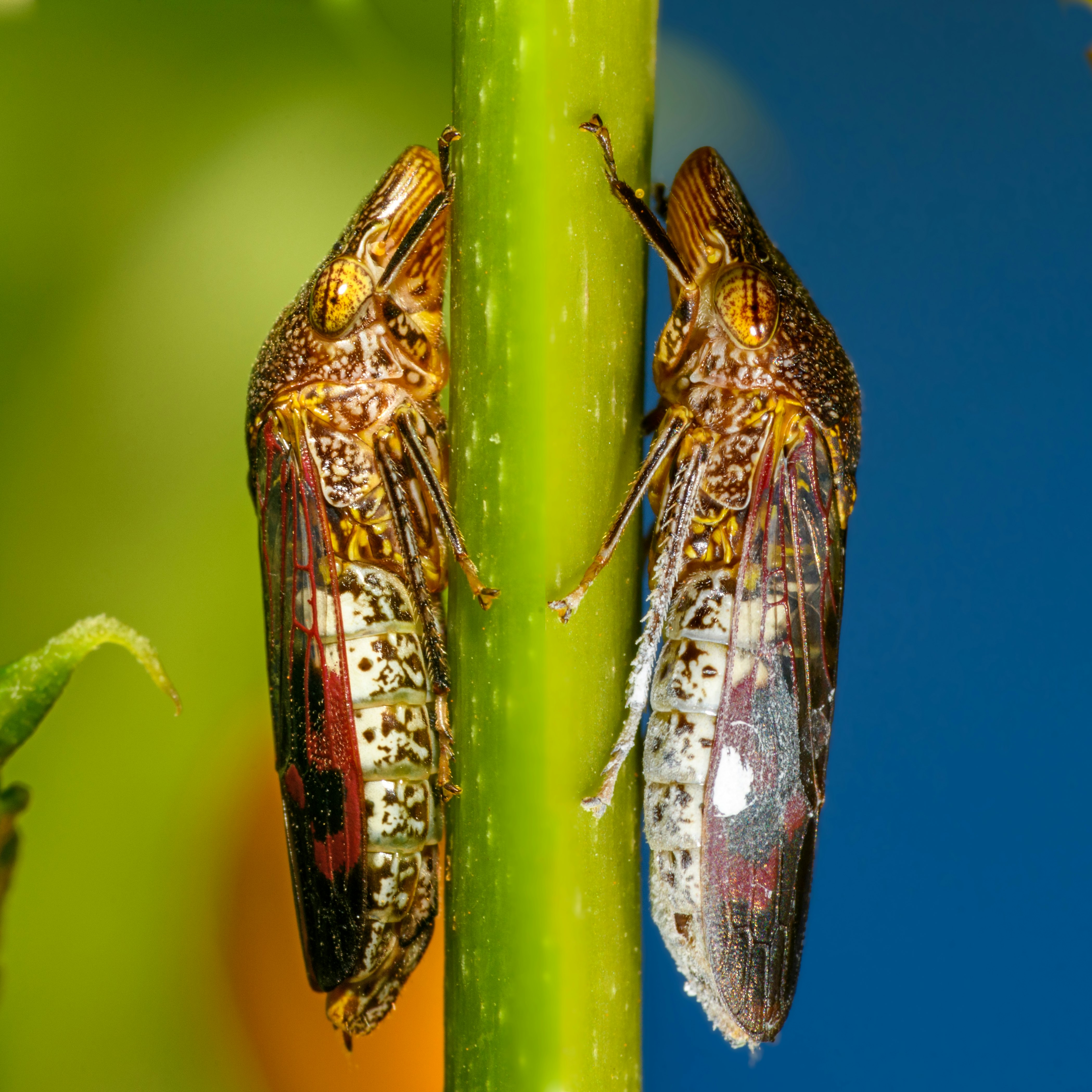
Getting caught in the rain takes on a very different meaning when you’re standing underneath a tree full of sharpshooter insects. If you start to feel liquid dribble on your head or shoulders, it won’t be rainwater, but rather a torrent of pee droplets flung by a horde of bugs.
Called “leafhopper rain,” this phenomenon is one of the most obvious displays of the sharpshooter’s novel way to excrete waste. The insects spend their days slurping up xylem sap from plants — which contains 95 percent water — and shooting it out their rear ends in rapid-fire blobs of liquid.
While scientists already knew about the sharpshooter’s ability to sling piss, one team of researchers decided to dive deep into how they do it. Writing this week in the journal Nature Communications, they explore the mechanics of the sharpshooter’s spring-loaded butts, revealing that they rely on a technique never before documented in an animal.
Pee projectiles
The questions began a few years ago when biophysicists Saad Bhamla and Elio Challita, both researchers at Georgia Institute of Technology, watched a sharpshooter pee for the first time.
Bhamla explained in a TED talk about the new research that the insect shot out droplets for hours — so quickly that it was actually difficult to see. “When I first saw sharpshooters pee, I fell in love,” he tells Inverse.
Bhamla and his team regularly investigate the physics of animal and insect behavior in the lab, so taking an interest in the sharpshooter’s curious waste disposal tactic was not unusual. Though researchers have studied the insect’s pee-flinging abilities before, Bhamla says that no one had looked at it through the lens of fluid mechanics or biomechanics.
And past studies had also been limited by the type of technology accessible for use. “No high-speed cameras were available, since they are a relatively new instrument for biologists,” Bhamla says.
For the new study, the researchers were able to secure a high-speed camera and also scan the bodies of sharpshooters to get a detailed look at their anatomy — revealing the surprising technique that powers their ability to turn their pee droplets into projectiles.
Up close and personal
Up close, it’s easier to see the tiny appendage at the end of the sharpshooter’s butt that helps it fling waste. Called the anal stylus, it protrudes next to an opening where pee droplets are released.
The researchers captured high-speed footage of the bugs doing their business, witnessing how the stylus acted as a springboard to fling droplets one by one. Through a series of calculations and mathematical analyses, they discovered that the insects use a technique called super-propulsion to catapult pee extremely fast.

“Super-propulsion is a principle where a squishy elastic projectile can be launched faster than the device used to launch it by timing the launch just right,” Challita tells Inverse. It’s similar to how divers time their leaps off of a springy diving board to get an extra boost, he explains.
In other words, the sharpshooters know how to time their droplet launches just right to send pee flying.
Typically, super-propulsion is discussed in the context of engineering, when synthetic systems are built to launch squishy objects. But the researchers write that this is the first time super-propoulsion has been observed in an animal.
It also appears to give the sharpshooter some important biological advantages.
Survival tactic
For sharpshooters, flinging waste droplets appears to be an energy-efficient process. That could explain why they evolved to pee in droplets rather than streams, like other insects such as cicadas.
Sharpshooters voraciously suck down watery sap from a variety of plants, meaning they have to get rid of waste quite frequently.
Over the course of a single day, the insects will expel more than 300 times their body weight in pee. Superpropulsion allows them to quickly get rid of droplet after droplet in rapid succession, without making too much effort.

And launching the projectiles far away might offer some other benefits as well. When pee droplets land on distant surfaces, their scent might confuse predators into detecting where the sharpshooters actually are – though researchers still have to test the idea.
If their waste droplets were solid instead, sharpshooters wouldn’t be able to fling them as far or using their anal stylus. But other insects, like skipper caterpillars, evolved different anatomy that helps them fling poo instead of pee.
“It is not uncommon for insects to forcefully expel their waste,” Challita says. “Insect species have developed unique methods to launch both liquid and solid excrement.”
Full stream ahead
Laying out the physics of the sharpshooter’s pee-flinging abilities could inspire future engineering projects, the researchers write.
Devices inspired by nature are extremely common in engineering. Learning how an insect can naturally use super-propulsion might give researchers new insights into how it can be replicated synthetically.
In the meantime, Bhamla’s lab will continue investigating how sharpshooters pee. In addition to exploring their anatomy and how their waste-flinging abilities affect the ecosystem, Bhamla and colleagues have taken an interest in other insects, as well.
“We are looking at various other insect excretory jets — it has opened a new avenue for exciting bioinspired fluid dynamics research for the lab,” he says.







